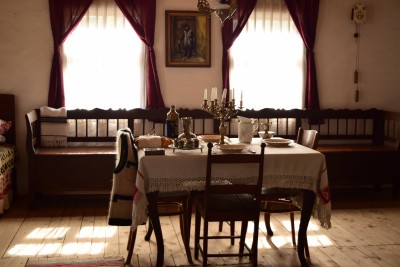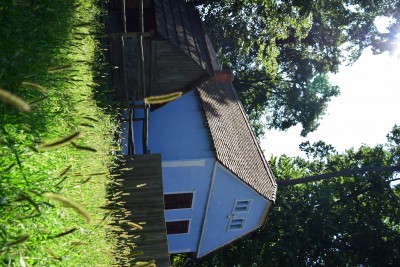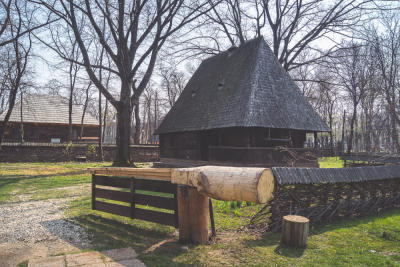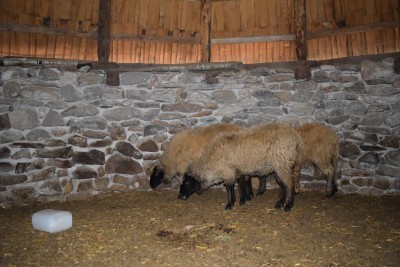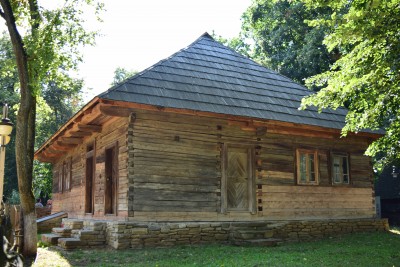The National Museum of the Village "Dimitrie Gusti"
Village Museum "Dimitrie Gusti", a true ethnographic treasure representing the authenticity of the Romanian village from the 17th - 20th centuries. Here are presented to the public houses, monuments, artifacts from different areas of the country, which illustrate the daily life in the world of the Romanian village of those times.
The village museum, an oasis of tranquility and charm, encompasses all the elements of life and customs in the rural area, with the presentation of all the elements that helped to satisfy the daily needs of the households, with a major significance in the history of Romania, considering that until the 20th century , a large part of the population of Romania lived in the village.
The museum is a "journey through time", a pleading for the authenticity of the village culture and civilization in Romania, the traditional way of life, the artistic sense and the inventive spirit of the Romanian peasant, but it is also one of the most active and fascinating centers of research, restoration and conservation of the national cultural heritage.
That is why the Village Museum "Dimitrie Gusti" is the most visited tourist attraction in Bucharest and the third in the country, after the Peles and Bran Castles.
To accomplish this project, Professor Dimitrie Gusti worked with a group of specialists from the Sociological School of Bucharest who coordinated the monographic research for 10 years (1925 - 1935): Henri H. Stahl, Victor Ion Popa, Mihai Pop, Mac Constantinescu (Mihai Filip), Traian Herseni. These investigations took place in a large number of Romanian villages, among which Runcu from Gorj county, Dragus from Brasov county, Fundu Moldovei from Suceava county, Nereju from Vrancea county, Dragomiresti from Maramures county, or Rusetu from Buzau County.

On May 10, 1936, the official inauguration of the Museum of the Romanian Village took place, in the presence of King Carol II, and the inauguration for the general public was held on May 17, 1936, once recorded in archives for the birth of this objective of the traditional Romanian heritage.
In 1937, the site for the construction of the Elisabeta Palace was inaugurated, in the immediate vicinity of the museum, following a project carried out since 1930, by the architect Duiliu Marcu, for Queen Elizabeth of Greece, born Princess of Romania, the first daughter of King Ferdinand. I of Romania and Queen Mary, sister of King Carol II of Romania.
At the museum, in order to complete the authenticity of the presented objectives, periodically, peasant families even lived in the households of the museum, including the birds and animals they had in their places of origin. The only drawback was the fact that by bringing peasant families to live here, the degradation of the objectives was obvious, and at that time there were not developed appropriate methods of preservation and restoration of heritage objects.
In 1940, the Bucharest councilors decided that in some museum households families of Bucovina and Bessarabian refugees would be permanently housed, leading to an even more accelerated degradation of the households, who lived here until 1948.
After the Revolution of December 1989, the Village Museum regains its individuality, by separating it from the museum with which it had merged, the current Romanian Peasant Museum, being developed a systematic program of priorities related to both the development of the heritage and the coverage of thematic segments not represented in the permanent outdoor exhibition. and in collections as well as a new orientation and foundation of research.
However, we must also mention two serious events that happened here after the Revolution, namely catastrophic fires, the first of them, in the "Transylvania" sector, on September 5, 1997, respectively that of February 20, 2002, in the areas of Moldova and Dobrogea, which they brought significant damage to the heritage here.

In Romania there are several museums of the village, next to the Museum of Bucharest, with national representation, and of the Museum of Transylvania, important being the Museum of the Banat Village, founded on August 20, 1971, in Timisoara, the Museum of the Bucovinean Village, established in Suceava in 1968, The Museum of the Valcean Village from Burdujeni, founded in 1974, the Museum of the Maramures Village, founded in December 1971, at Sighetu Marmatiei and the Museum of Traditional Popular Civilization ASTRA (The open air museum in Dumbrava Sibiului), with national representation, which covers a surface. 96 ha and which was established in 1963.


